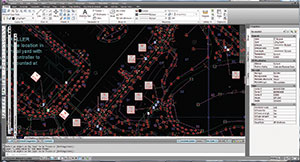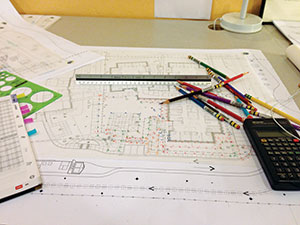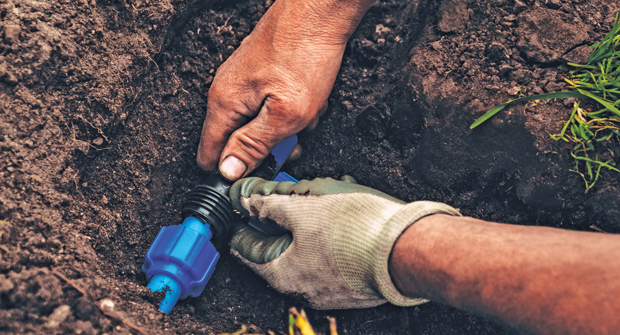Does software save time or muddy the irrigation design process?
Designing an irrigation system can be a time-consuming process that becomes increasingly complicated when errors occur. Many irrigation contractors use design software to hasten the process and improve accuracy. Experiences using computerized design often vary. Some users report major efficiency increases, while other designers prefer the intimate knowledge they gain from manual designs.
Jason Anderson’s first experience with irrigation design software occurred in 2005, a year before he joined the staff at Design Two Four Two Six in Bellevue, Wash. A coworker at his former company had introduced him to a system by Land F/X. Anderson was so impressed by the system’s ability to automate designs that a year later he recommended it to his new boss at Design Two Four Two Six.

The design software costs about $3,000 for a single license. The software works within existing AutoCAD systems. Companies that don’t already have AutoCAD can purchase a basic AutoCAD version from Land F/X for another $1,000. Land F/X and similar systems enhance the capabilities of AutoCAD by performing automated calculations and allowing more flexibility to make adjustments.
The system has cut the time Anderson spends on designs by at least one-third, freeing him to take on additional projects. Previously, Anderson drew the plans by hand. He used Excel spreadsheets to tally the number of heads needed for a particular plan.
With Land F/X, Anderson can select a standard set of heads for a particular design and then click a tool in the program that automatically connects the lateral lines, the main line and the valve.
“I’m able to link them all together and tell the program how much water is coming through the water source,” he says. “The program has been set up so it can take these calculations and essentially tell you whether or not the irrigation system is going to work. It really automates everything.”
Anderson also can input elevations and access manufacturers’ product information through the system.
The automated design process reduces the likelihood of mistakes, he says.
If Anderson misses a critical design component, the computer program automatically highlights the overlooked area, saving the company from potential change orders or stress on the irrigation system caused by poor installations.

Testing the waters
Landscape architect Marina Wrensch began using a four-week trial version of Land F/X in January to see if she could eliminate human error from the design process and improve efficiency. Wrensch, who works for Cameron McCarthy Landscape Architecture and Planning in Eugene, Ore., says her firm currently draws head layouts and zoning on trace paper before drafting the plan in AutoCAD. The hand drawing allows the designers to make adjustments that aren’t possible in AutoCAD. Land F/X provides similar flexibility while automating the process.
Wrensch estimates the system can cut design times by at least 30 percent.
“The time I saved scaling blocks, calculating GPM, PSI and pipe sizes was tremendous, in my eyes,” she says.
While the system shows promise, there were some compatibility and technical issues, Wrensch says. Half of Cameron McCarthy’s landscape architects use AutoCAD LT, which is not compatible with Land F/X. In addition, the learning curve was steeper than AutoCAD because of the expanded range of tools available. Wrensch also encountered a technical glitch when adding pipe hoops that caused all the pipe sections to disappear.
“Technical support did not know why and how this happened,” she explains. “But with every piece of technology, you get a few hiccups nobody can explain.”
So far, Wrensch hasn’t convinced her company to purchase the Land F/X system, but she says she for one prefers computer-created drawings.
Hands-on knowledge
Hand drawings may be more time consuming, but they can be invaluable to contractors who do both design and installation.
In 2004, Jim DeJarnatt left the telecommunications business to join a landscaping firm. Last year DeJarnatt decided to form his own irrigation business, a three-man operation called Aqua Jim in St. Louis.
DeJarnatt typically can produce a drawing in four to eight hours. He has dabbled with AutoCAD in the past but says the drawings offer him insight into the job that automated systems cannot.
“I like the drawing aspect of the work,” he says. “It gives me a good feel for the job, especially if I’m going to be doing the installation. It gets me immersed in the job.”

